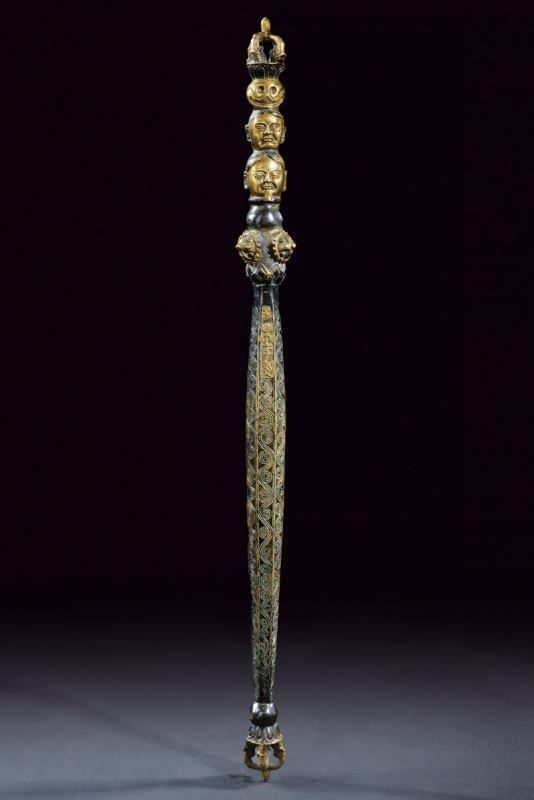Information
height 48 cm.
Structure made from a single piece of brass-coloured metal, decorated in relief and with piercedvajra elements. Partially blued to highlight the brass-coloured parts. The Tibetan ritual khatvanga (also spelled katvanga or katvanka) is a symbolic staff or club topped with a skull, often surmounted by a vajra. It has a deep meaning in Vajrayana Buddhism. It represents the union of wisdom and method, symbolizing the non-dual nature of deities who carry it. The skull represents the impermanence of the body and the triumph of wisdom over illusion, while the vajra stands for the thunderbolt of sudden enlightenment and spiritual power. Commonly associated with goddess like Vajravarahi, the khatvanga is typically carried in the left arm socket or balanced across the shoulders during Tantric rituals. Originating in Indic Tantric traditions and later integrated into Tibetan Buddhism, it also has connections to earlier tribal shamanic tools. Ultimately, the khatvanga serves as a powerful emblem of transformation, enlightenment, and the transcendence of duality.
Contact
Condition report
Suggested lots
Caricamento lotti suggeriti...











